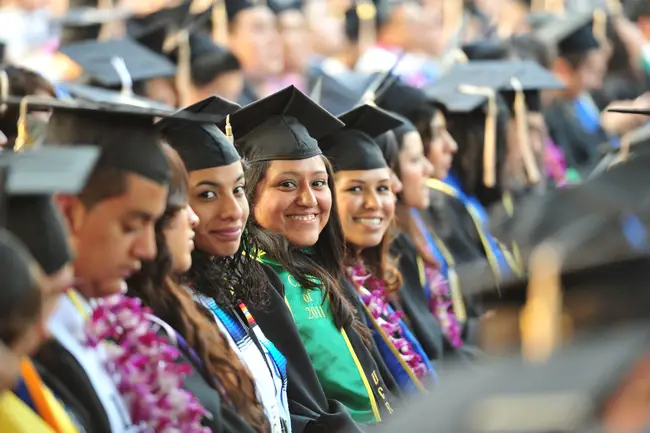Latinos are underrepresented in most of the public colleges and universities across the country as compared to white people.
According to a new report by The Education Trust, in 40 of the 44 states, and especially at the community and technical colleges, Latinos continue to stay underrepresented, while at the four-year public institutions in 33 states, their representation is not on par with the state’s proportion of Latino residents.
Noted in the Broken Mirrors series, the report found enrollment gaps of 10 percentage points or more between Latino and white students in states like California, Colorado, Florida, Nebraska, New York, North Carolina, Massachusetts, and Texas.
The underrepresentation was mostly noted at the associate degree level. In at least 29 states, Latinos are underrepresented among associate degree earners. At the same time, the bachelor’s degree level is much worse in 14 states that are home to 68 percent of Latino adults having no college degree.
“A college degree is the surest path to the middle class. The fact that Latinos don’t have equitable access to college classes or a college degree means millions of Latinos are missing out on the best chance to move their families into the middle class,” said Wil Del Pilar, Vice President of Higher Education at The Education Trust.
“This isn’t just damaging to Latinos. This systemic inequality threatens our democracy and our economy. It’s time for state leaders to act,” he added.
States like Arizona, Colorado, Connecticut, Hawaii, Kansas, Massachusetts, Minnesota, Nebraska, and Texas have a lot of room to improve the shares of Latinos who are awarded a bachelor’s degree.
A recent Pew Research Center survey noted a rise in Hispanic enrollment in colleges. From 6 percent in 1996, the Latino student enrollment went up to 16 percent in 2016, constituting the largest minority group among students at minimally selective four-year institutions. The share of Hispanic enrollment at two-year colleges has increased from 11 percent in 1996 to 24 percent in 2016 as well.
Pre-college advising programs are especially helpful for Latino students in understanding postsecondary admissions procedures and financial aid processes.
Nine Colleges Receive Seal of Excelencia for Serving Latino Students

